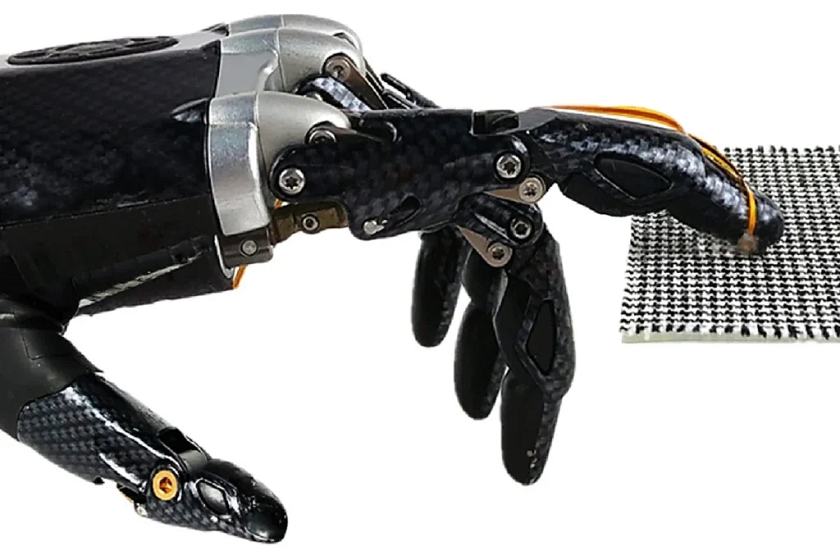
Will help people with prostheses: scientists have created a sensor that allows you to feel the texture of objects
A group of Chinese scientists has created a new sensor system that mimics the tip of a human finger.
A sensor that mimics the pad of a human finger can detect the texture of an object it touches in real time. Over time, the scientists hope to reach a new level and allow people with prostheses to feel what the sensor detects. The development will also be useful in robotics.
Developed by researchers from the Southern University of Science and Technology (SUSTech) in Shenzhen, Xi’an University in Xi’an, and the University of Houston, the sensor uses artificial intelligence technology to recognize different textures, including wool, linen, nylon, polyester, and twill, and display the results over time.
“A sensor system integrated into a prosthetic finger can identify 20 different commercial fabrics with 100 percent accuracy at a fixed sliding speed,” the team writes in an article published Wednesday in the peer-reviewed journal Nature Communications.
The sensor is attached to the fingertip of the prosthetic hand. As it slides through different tissues, the signal is sent to a computer and analyzed using machine learning. The recognition result is currently displayed on the screen. The sensor detects texture through both static pressure and high-frequency vibrations. According to the researchers, this single-sensor system is simpler and more reliable than existing systems that require two sensors integrated with two sets of data collection systems.
“This system is expected to contribute to the development of sensor technologies in robotics and prosthetics and is potentially useful for sensory recovery of patients using artificial prostheses based on the use of virtual reality based on tactile sensations and consumer electronics,” the researchers said.
Lead author Guo Chuanfei, a professor at SUSTech’s Department of Materials Science and Engineering, said the team is working to ensure that the data from the sensor is not only displayed on the screen, but that people with prosthetic limbs can feel what the sensor detects.
“Transmitting electrical signals to the brain through nerves is still a rather difficult technological task,” says Guo Chuanfei, “so we have moved on to transmitting signals to the skin of other parts of the body, such as the upper arm or chest, which allows the brain to process the information.
According to him, in addition to being used in robotics and for people with prostheses, the technology can be used in virtual reality, for example, the user will be able to remotely feel touch during video calls or feel the texture of products when shopping online.

